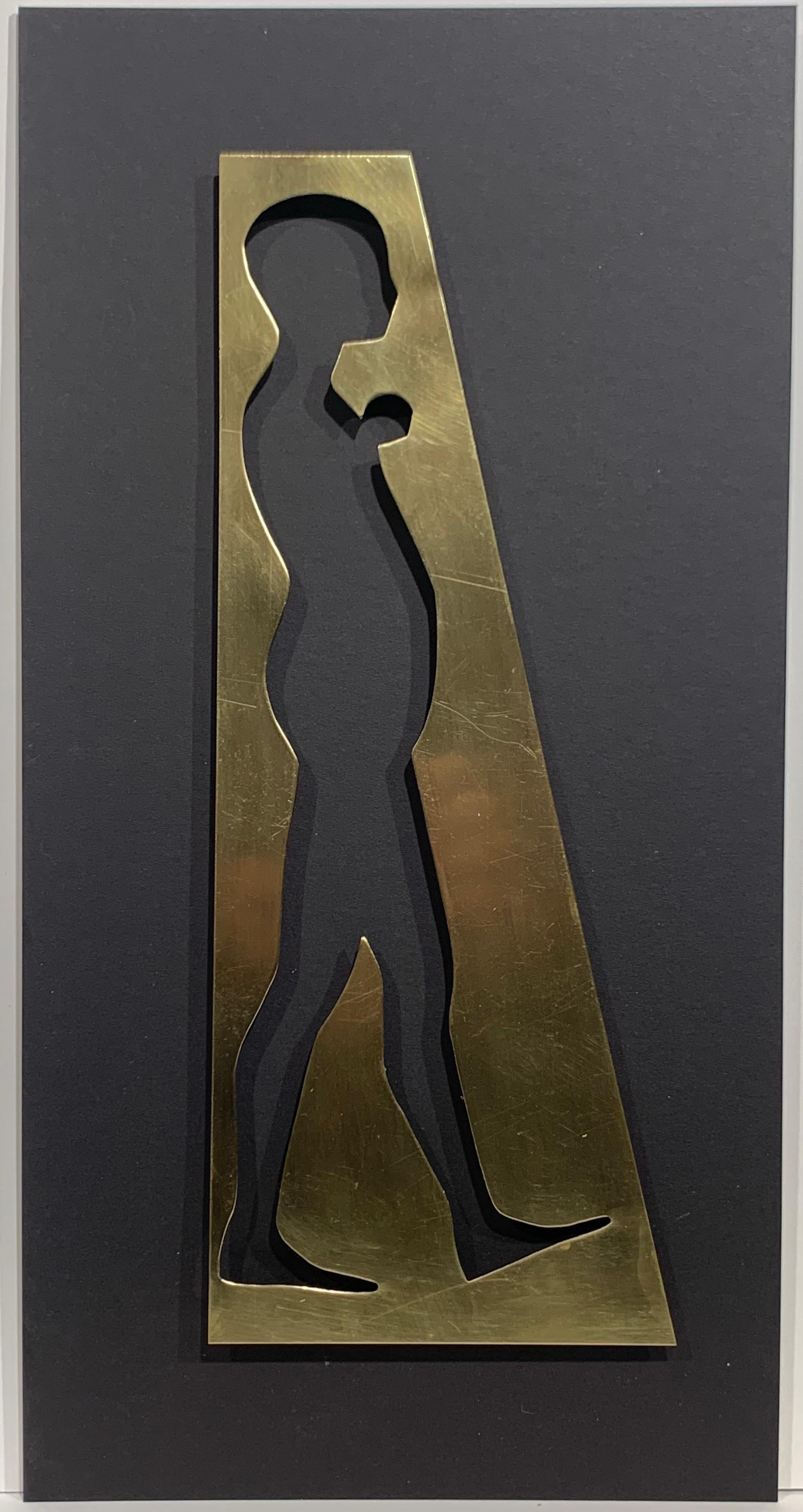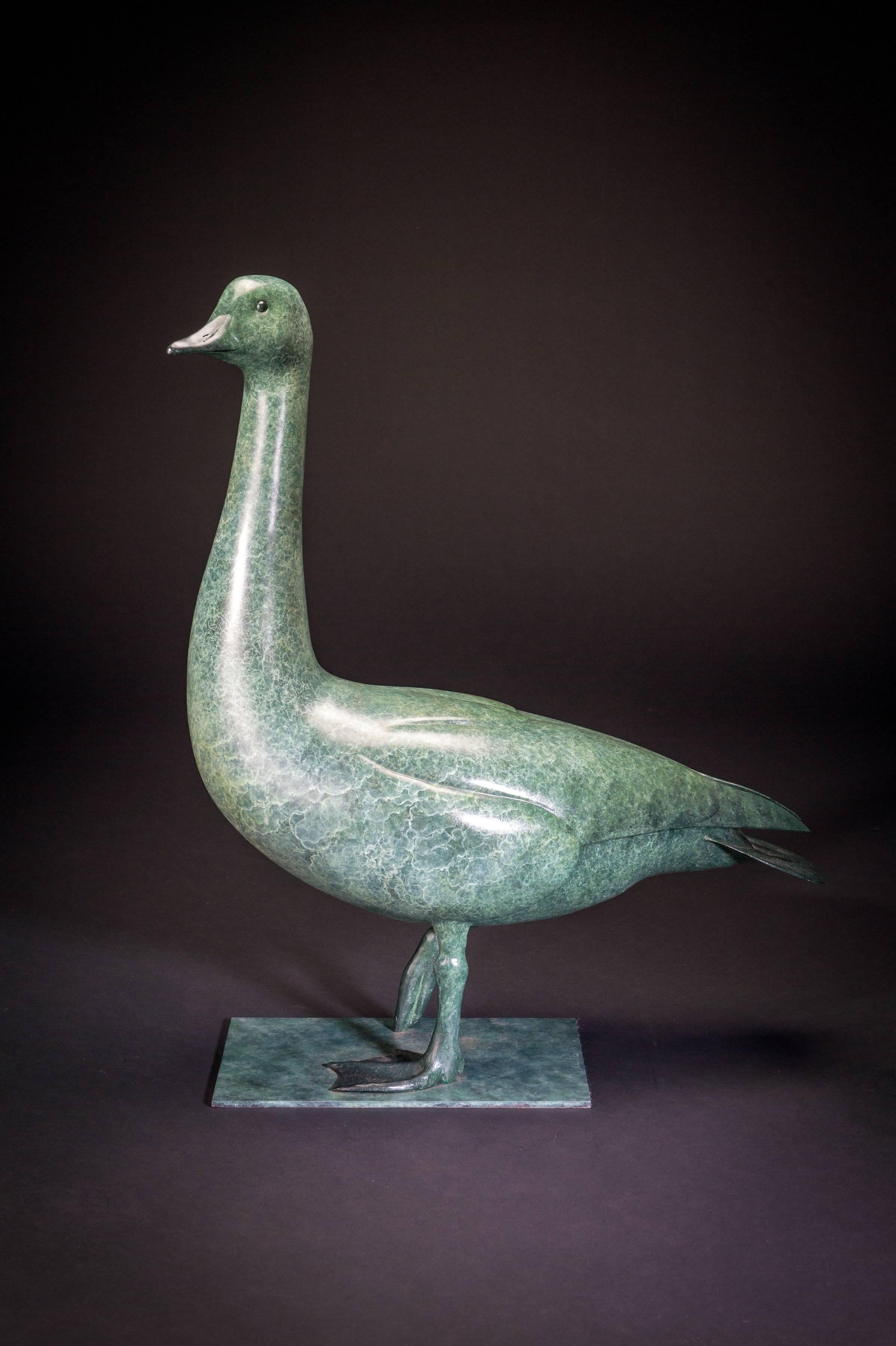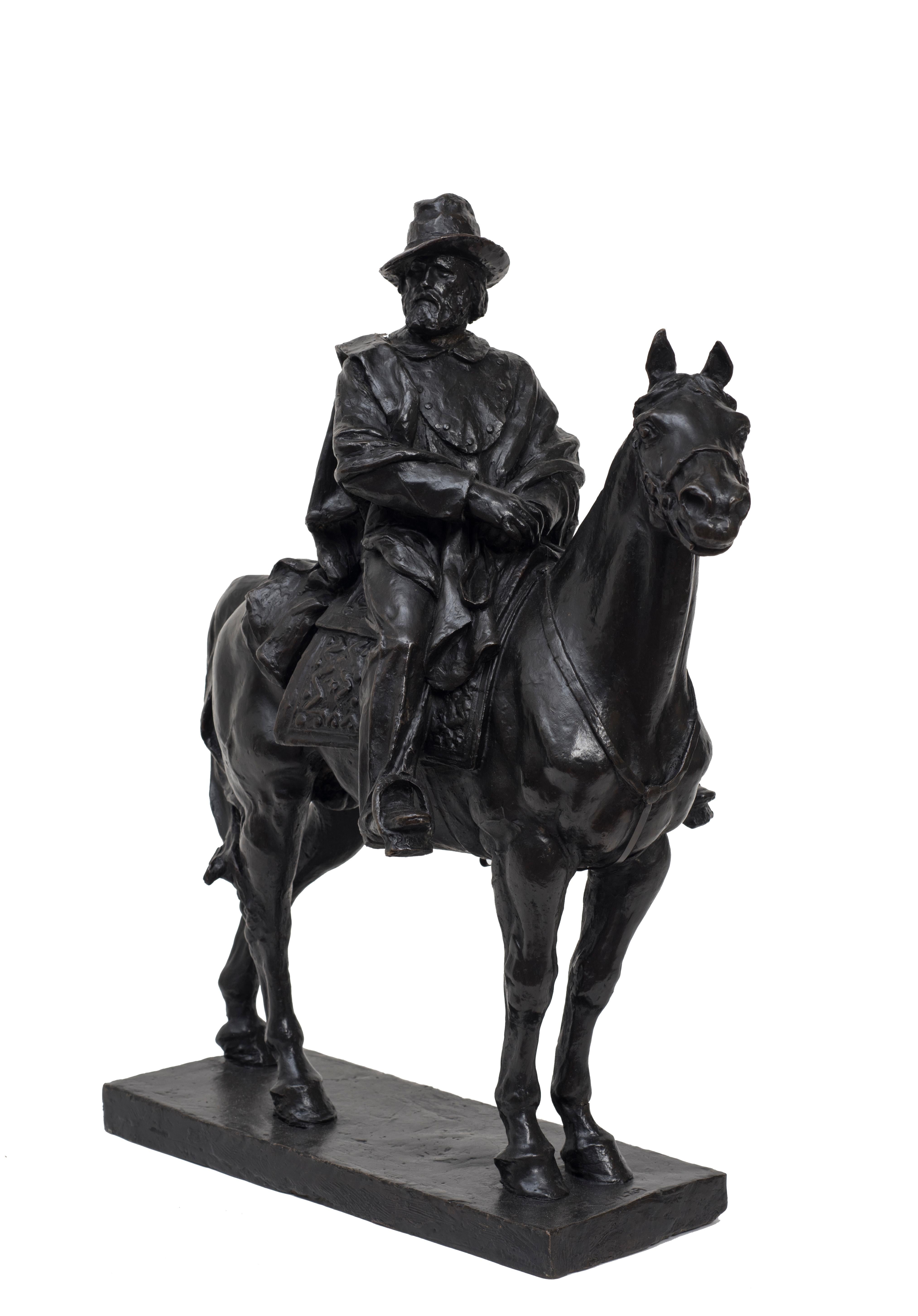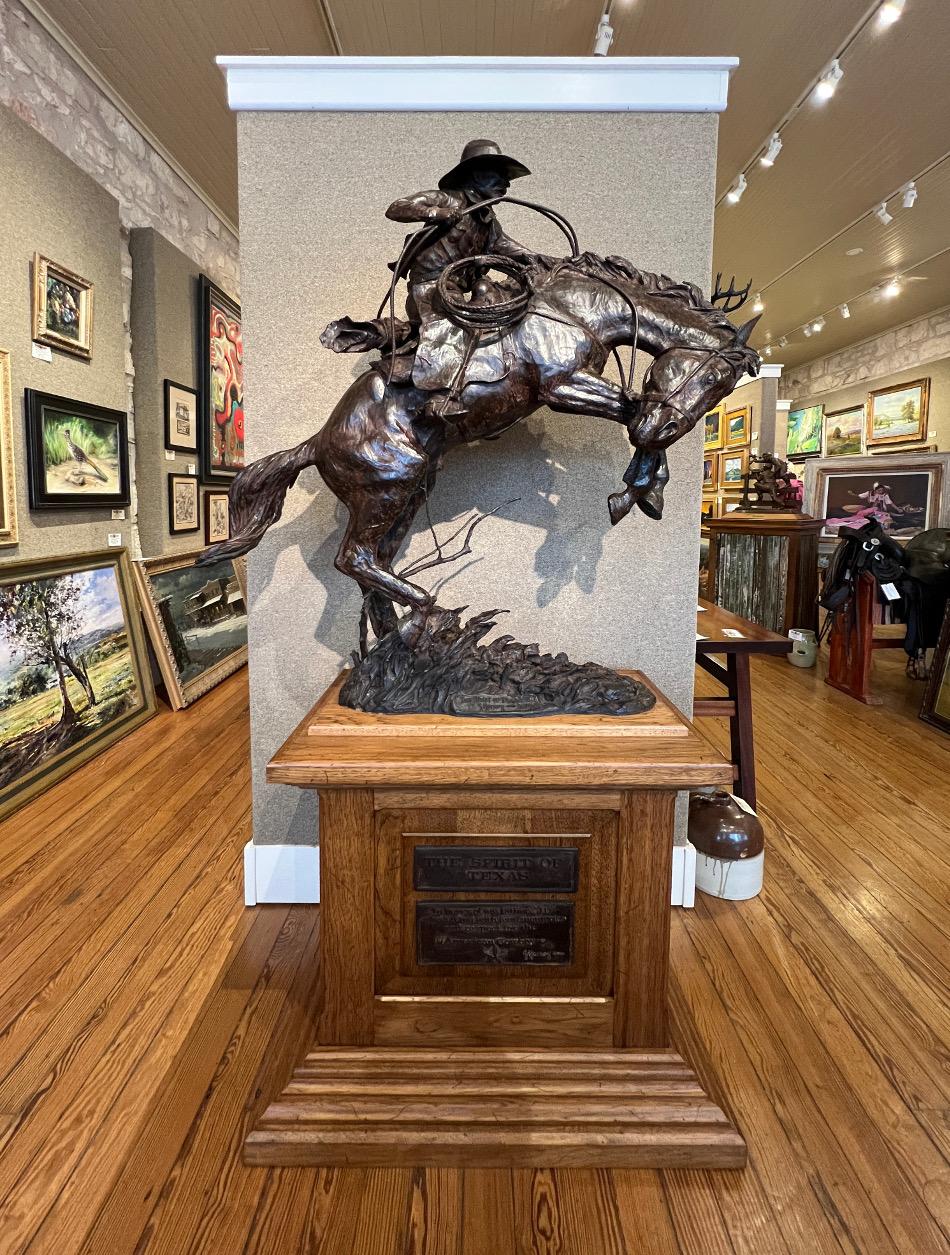Items Similar to Epicurienne
Want more images or videos?
Request additional images or videos from the seller
1 of 2
Philippe HiquilyEpicurienne2011
2011
About the Item
Philippe Hiquily (1925 – 2013) is a French artist and designer known for biomorphic furniture and sculptures. He was able to combine modernist design, insect physiognomy, and human sexuality, to produce unique surrealist works. Hiquily stands apart from the market of art and artistic movements. His almost omnipresent eroticism and the delicacy of its achievements contrast with the raw appearance of the materials, which serve as its base.
Born on March 27, 1925 in Paris, France, Hiquily attended the École des Beaux-Arts in Orléans and later the École Supérieure des Beaux Arts in Paris. In Paris, Hiquily mingled with prominent artists, including Jean Tinguely and Germaine Richier. In 1959, he received the Critic’s Prize for his sculpture at the Paris Biennial. That same year, he showed work at New York-based gallery The Contemporaries, where he met the American artist Robert Rauschenberg.
Using strange, semi-Gothic tapering forms, animal hides, fossils, and metal, Hiquily’s furniture, including his “Van Zuylen” table, combines the imaginative and whimsical with a more serious sense of the antique. His influence by the work of the American artist Alexander Calder is very evident. He explored the question of mobility, balance and movement. By integrating electric motors into his works, he gave a new dimension to the traditional conception of sculpture.
Hiquily died on his 88th birthday on March 27, 2013 in Villejuif, France. Today, his works are held in the collections of The Museum of Modern Art in New York, The Salomon R.Guggenheim Museum, New York, The Musée National d’Art Moderne, Paris and the Centre Georges Pompidou in Paris, and the Museum of Contemporary Art in Montreal with many more private collections.
His path reveals a unity captured by his work. An alert mind, actively engaged in restless questioning, attests to an independence that kept him at a distance from groups. Never fully agreeing with the Surrealists, nor with the abstract artists, he exploited an aesthetic vein whose enchantment would never run dry. Post-cubism has also driven French artist Philippe Hiquily to create something different, something unique.
Though inspired by the Post-Cubist movement, Hiquily does not adhere strictly to its practices, and chooses instead to marginalize himself and allow this movement to be viewed in a new light through his personal artistic lens.
- Creator:Philippe Hiquily (1925 - 2013, French)
- Creation Year:2011
- Dimensions:Height: 70.87 in (180 cm)Width: 29.53 in (75 cm)Depth: 35.44 in (90 cm)
- Medium:
- Period:
- Condition:
- Gallery Location:PARIS, FR
- Reference Number:1stDibs: LU2506214141702
About the Seller
No Reviews Yet
Vetted Seller
These experienced sellers undergo a comprehensive evaluation by our team of in-house experts.
1stDibs seller since 2023
Typical response time: 10 hours
- ShippingRetrieving quote...Ships From: Paris, France
- Return PolicyA return for this item may be initiated within 14 days of delivery.
More From This SellerView All
- Wild CatLocated in PARIS, FRNadim Karam is a Lebanese artist, architect, and urban planner known for his diverse body of work that includes sculpture, painting, installations, and urban interventions. Born in 1...Category
2010s Figurative Sculptures
MaterialsSteel
- ElephantLocated in PARIS, FRNadim Karam is a Lebanese artist, architect, and urban planner known for his diverse body of work that includes sculpture, painting, installations, and urban interventions. Born in 1...Category
2010s Figurative Sculptures
MaterialsSteel
- MimiLocated in PARIS, FRNadim Karam is a Lebanese artist, architect, and urban planner known for his diverse body of work that includes sculpture, painting, installations, and urban interventions. Born in 1...Category
2010s Figurative Sculptures
MaterialsStainless Steel
- HarrietLocated in PARIS, FRBorn december 19 1958, De Keyzer studied at the Koninklijke Academie voor Schone Kunsten, Eeklo, lead by professional sculptor Leo De Buysere. In a time and environment where creati...Category
2010s Figurative Sculptures
MaterialsBronze
- EuropeLocated in PARIS, FRBoldi is a Hungarian sculptor who creates works that express a balance between reason and emotion. His sculptures reveal not only the true form of human figures but also the emotions...Category
2010s Contemporary Figurative Sculptures
MaterialsBronze
- Taureau edition 2/8Located in PARIS, FRSculptor Alfred Basbous (1924 - 2006) was born in Rachana, Lebanon. His works express a lifelong exploration of the human form and its abstract propert...Category
2010s Figurative Sculptures
MaterialsBronze
You May Also Like
- Walking Man with DiscBy Ernest TrovaLocated in Wilton Manors, FLBeautiful figural sculpture by American artist, Ernest Tino Trova (1927-2009). Walking Man with Disc (working study), 1966. Brass sheet with cut-out figure in profile, sheet measures...Category
Mid-20th Century Abstract Figurative Sculptures
MaterialsBrass
- Show of InterestBy Brad RudeLocated in Denver, COArtist Brad Rude was born in Montana and has lived in Walla Walla, Washington most of his life. His journeys through his grandfather's folk art studio left...Category
2010s American Modern Figurative Sculptures
MaterialsEnamel, Bronze
- Contemporary Bronze Green Bird Wildlife Garden or interior Sculpture 'Goose'By Richard Smith b.1955Located in Shrewsbury, Shropshire'Goose' is a stunning sculpture full of character. As a gamekeeper, Richard Smith understands and loves the animal he sculpts - he lives and breathes nature! Richard Smith has gained an international reputation for his works of art, he has exhibited at prestigious galleries such as the Tryon Gallery and W. H. Pattersons in London, The Sportsman’s Edge Gallery in New York, The Call of Africa in Fort Lauderdale, Florida and the Everard Reed Gallery in Johannesburg, South Africa. Richard has exhibited his paintings at the Leigh Yawkey Woodson Museum in the USA, the Natural History Museum and Tring Museum in Britain. He has sold at all the major auctions houses in London, such as Christie’s, Sotheby’s, Bonhams and Phillips. In 2013 Callaghans of Shrewsbury...Category
21st Century and Contemporary Contemporary Still-life Sculptures
MaterialsBronze
- ConfuciusBy Wu WeishanLocated in Roma, ITThis artwork is equipped with the special box which was made for the exhibition An International Touring Exhibition of the Art of Wu Weishan·Special Exhibition. Exhibition : Sculpti...Category
21st Century and Contemporary Contemporary Figurative Sculptures
MaterialsBronze
- Garibaldi Riding a Horse - Original Bronze Sculpture by Carlo RivaltaBy Carlo RivaltaLocated in Roma, ITGaribaldi Riding A Horse is an original bronze sculpture realized by Carlo Rivalta. Signed by the artist. Beautiful and important sculpture representing the most famous Italian Hero...Category
Early 20th Century Figurative Sculptures
MaterialsBronze
- " THE SPIRIT OF TEXAS " HUGE, 81" TALL BRONZE BUCKING BRONCO COWBOY WESTERNBy G. HarveyLocated in San Antonio, TXG. Harvey (Gerald Harvey Jones) (1933-2017) San Antonio, Austin, and Fredericksburg Artist Image Size: 81 Inches Tall Medium: Bronze Sculpture Dated 2006 "The Spirit Of Texas" Bucking Bronco & Rider They are very scarce. I only know about 2 others that have even come up for sale in the last 10 years or so. Please not the dedication on the wooden base of the sculpture. There is one on Gerald Harvey Jones (G. Harvey) tombstone in the Texas State Cemetery in Austin, Texas. Western, Cowboy, Horse, Bronc, Bronco Riata, Rodeo G. Harvey (Gerald Harvey Jones) (1933-2017) Known for paintings closely linked in mood and subject matter to Edouard Cortes [1882-1962], G Harvey creates romanticized street scenes of turn of the century towns in America. Rain slick streets reflect urban lights, and the weather is obviously cold. He grew up in the rugged hills north of San Antonio, Texas from where herds of longhorn cattle were once driven up dusty trails to the Kansas railheads. His grandfather was a trail boss at 18 and helped create an American legend for his grandson. So the American West is not only the artist's inspiration but his birthright. Harvey's early interest in sketching and drawing slowly evolved into a passion for painting in oils. After graduating cum laude from North Texas State University, Harvey took a position with the University of Texas in Austin, but he soon realized that weekends and nights at the easel did not satisfy his love of painting. He abandoned the security of a full-time job in 1963 and threw his total energy into a fine art career. Harvey paints the spirit of America from its western hills and prairies to the commerce of its great cities. His original paintings and bronze sculptures are in the collections of major corporations, prestigious museums, the United States government, American presidents, governors, foreign leader and captains of industry. The Smithsonian Institution chose Harvey to paint The Smithsonian Dream, commemorating its 150th Anniversary. The Christmas Pageant of Peace commissioned Harvey to create a painting celebrating this national event. He has been the recipient of innumerable awards and the subject of three books. G. Harvey lived in Fredericksburg, Texas, with his wife Pat in a 150-year-old stone home built by German settlers. His studio and residence are nestled within the Historic District of Fredericksburg. It is obligation of fine artists to present us with more than pretty pictures. They must also make us feel. Among the western painters of today, there is none more capable of accomplishing this than G. Harvey. In his paintings, the viewer into only sees the physical elements of his subject, but also senses the mood that surrounds them. It is a remarkable aspect of fine art, which few artists are able to master. Gerald Harvey Jones was born in San Antonio, Texas, in 1933. His grandfather was a cowboy during the trail-driving era when legends grew up along the dusty trails north from Texas. Family stories of wild cattle and tough men were absorbed by a wide-eyed boy and became the genesis of G. Harvey's art. A graduate in fine arts at North Texas State University, Harvey taught full-time and painted nights and weekends for several years. It was through painting that he found his greatest satisfaction, and his native central Texas hill country provided the inspiration for most of his earliest work. With the development of his talent and the growth of his following, Harvey began to expand his artistic horizons. He left teaching and concentrated on a career in fine art. He sought the essence that is Texas and found it not only along the banks of the Guadalupe, but in cow camps west of the Pecos, and in the shadows of tall buildings in big Texas cities. The streets of Dallas once echoed with the sound of horse hooves and the jingle of spurs. Historic photographs reveal what it looked like, but only an artist like Harvey can enable a viewer to experience the mood and flavor or the time. Contemporary western art has too often centered on the literal representations from its roots in illustrations. Artists like G. Harvey take us a step further, to the subjective impressions that are unique to each great talent and which constitutes something special and basic to fine art expression. Harvey was a soft-spoken and unassuming man who cared deeply about what he painted without becoming maudlin or melodramatic. We sense there is more in each Harvey painting than just that which is confined to the canvas. Resources include: The American West: Legendary Artists of the Frontier, Dr. Rick Stewart, Hawthorne Publishing Company, 1986 Artist G. Harvey grew up in the rugged hills north of San Antonio, Texas from where herds of longhorn cattle were once driven up dusty trails to the Kansas railheads. His grandfather was a trail boss at 18 and helped create an American legend. The American West is not only the artist's inspiration but his birthright. Harvey's early interest in sketching and drawing slowly evolved into a passion for painting in oils. After graduation cum laude from North Texas State University, Harvey took a position with the University of Texas in Austin, but he soon realized that weekends and nights at the easel did not satisfy his love of painting. He abandoned the security of a full-time job in 1963 and threw his total energy into a fine art career. Two years as a struggling artist followed, but 1965 brought acclaim for the artist's first prestigious show, The Grand National exhibition in New York, and the American Artists' Professional League presented him with their New Master's Award. President Lyndon Johnson discovered his fellow Texan's talent, became a Harvey collector and introduced John Connally to the artist's work. Connally was enthusiastic about Harvey's art, and, on one occasion, he presented a G. Harvey original to each governor of Mexico's four northern states. Harvey paints the spirit of America from its western hills and prairies to the commerce of its great cities. His original paintings and bronze sculptures are in the collections of major corporations, prestigious museums, the United States government, American presidents, governors, foreign leader and captains of industry. The Smithsonian Institution chose Harvey to paint The Smithsonian Dream commemorating its 150th Anniversary. The Christmas Pageant of Peace commissioned Harvey to create a painting celebrating this national event. He has been the recipient of innumerable awards and the subject of three books. Through his art, our history lives. Gerald Harvey Jones, better known as G. Harvey, grew up in the Texas Hill Country listening to his father and grandfather tell stories about ranch life, frontier days in Texas, and driving cattle across the Red River. Early in his career, he began to draw inspiration from that collective memory for paintings that would eventually earn him the reputation as one of America's most recognized and successful artists. His art is rooted in the scenic beauty of the land he grew up in and the staunch independence of the people who live there. He says, "My paintings have never been literal representations. They are part first-hand experience, and part dreams generated by those early stories I heard. They are a product of every place I have been, everything I have ever seen and heard." G. Harvey graduated from North Texas State University. He taught in Austin, but continued to study art in his spare time, eventually devoting full time to his painting. The year 1965 was a turning point when he won the prestigious New Masters Award in the American Artist Professional League Grand National Exhibition in New York. It is often said that in viewing a work of art, one is granted a unique look into the thoughts and expressions of values that give meaning to the artist work. Nowhere does this ring truer than the art of G. Harvey. Though Harvey has had nearly two decades of sell-out shows, an outstanding honor came with a series of one-man shows in Washington, D.C. in 1991. The first was at the National Archives featuring his paintings of the Civil War era, then a selection of paintings of notable Washington landmarks was exhibited at the Treasury Department, culminating in a one-man show of 35 paintings at the Smithsonian Institution during their exhibition of The All-American Horse. His work was featured in Gilcrease Museum exhibitions from 1992-1997. In 1987 his alma matter...Category
Early 2000s Impressionist Figurative Sculptures
MaterialsBronze
Recently Viewed
View AllMore Ways To Browse
Biomorphic Furniture
Insect Sculpture
Human Sculpture Table
Jean Philippe
Metal Insects
Modernist Table Sculpture
French Art Moderne Table
Aesthetic Centre Table
Antique Motor
Animal Fossil
A R Philippe
Calder Table Sculpture
Pohlman Knowles Glass
Richard Orlinski Crocodile
Sandstone Couple Sculpture
Stoneware Pig
The Unbearable Lightness Of Being
Vanessa Beecroft




